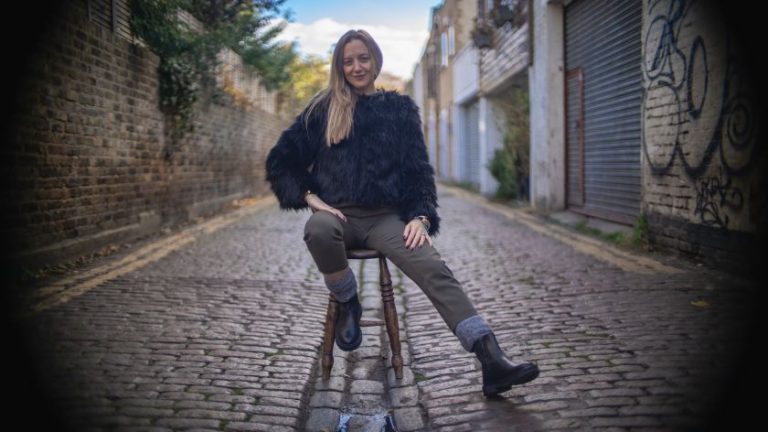Should I stay or should I go? Image licensed via Adobe Stock
Rising rents and remote work are driving a creative exodus from London and other major cities, transforming once-overlooked towns across Britain.
When did you last look at your rent and feel positive about what you’re getting for your money? When did you last walk out your front door and feel inspired rather than overwhelmed? If you’re shaking your head at these questions, you’re not alone.
There was a time when being a creative meant living in the thick of it — the noise, the neon, the chaos of a big city like London, Manchester, Cardiff, Glasgow, Belfast or Bristol. That’s where the opportunities were, right? But here’s the thing: maybe that was never really true. Or maybe it was true once, but it certainly isn’t any more.
Right now, creatives across the UK are asking themselves a fundamental question: what if the best place to build a creative career isn’t where everyone says it should be? What if the most inspiring place to live isn’t the most obvious one?
Some are leaving cities by choice, seeking more space, fresh air, balance and community. Others are being pushed out by rising rents and squeezed opportunities. But whether it’s choice or necessity driving the move, the result is the same. Smaller towns are getting a creative boost that’s transforming them completely.
So here’s the question: if you’re feeling stuck, stressed, or priced out, what’s holding you back? Because from Hastings to Macclesfield, creatives are discovering that the most exciting opportunities might just be in the places they’d never thought to look.
Why creatives are leaving cities
Liam Jackson, a graphic designer who spent 18 years in London before returning to his hometown of Southport, captures this sentiment perfectly. “Being in the bubble of London, I was scared that the move would be great in terms of buying a house and being closer to family and friends,” he explains. “But it scared the shit out of me in terms of creativity and business.”
He needn’t have worried, though. “After a year of being back up north, I can tell you that my fears were unnecessary,” Liam reports. “There’s a great creative scene and buzz in Southport and the north in general. I’ve been to lots of awesome creative events, with a highlight being the Northern Design Festival in Lancaster, where I made so many friends and connections.
“I’m getting lots of work from local Southport businesses,” he adds, “and also continuing to work with the relationships I’d built up down south. I’m really happy we made the move. Reconnecting with my hometown and its people has proven you don’t need to be in a big city to get creative inspiration, find work or live a fulfilling life.”
Fresh opportunities
With remote work far more accepted these days and digital tools making it easier to work from anywhere, more and more creatives are realising they don’t have to be in London, Manchester or Bristol to build a thriving career.
Lisa Campana, head of design at Viral Health, is among them. She left London three years ago to live on the Jurassic Coast near Lulworth Cove. “It probably seemed a risky move for a female designer about to turn 50,” she reflects. “But I made it work. I’m able to work from home and still commute into London to work in our office a couple of times a month.”
Lisa Campana’s local beach
Beyond just saving cash and avoiding crowded Tube journeys, there’s something more intentional happening, too. Creatives want to feel part of a community. They want to make a difference. And in smaller towns, they’re finding not just space but purpose.
Stockport: overlooked to up-and-coming
Stockport’s transformation, a decade in the making, offers a great example. Once dismissed as Manchester’s sleepy sibling, the news that the Metrolink will finally connect it to the city centre isn’t just about transport; it’s confirmation that Stockport has stepped out of Manchester’s shadow and into its own light.
Essentially, as creatives priced out of Manchester began to seek alternatives, many turned to this underappreciated town, just 10 minutes down the train line. They saw potential, while others saw a decline. And so they moved in, set up studios, opened bars, launched businesses, and built something new.
Today, the town is buzzing with activity. From the regeneration of the Underbanks to venues like Bask and The Spinn Off, there’s a renewed energy that’s impossible to ignore. Rightmove reports that house prices have surged as more people flock to the area. And it’s easy to see why.
Repeated pattern
Stockport isn’t the only town enjoying a revival. Stephen McGilvray, executive creative director at FutureBrand, moved from London to the East Sussex-Kent border after 20 years in the capital. His wife gave up her role as a stylist at Net-a-Porter and Matches Fashion to establish her own styling business around Tunbridge Wells. “It’s been amazing to see the network she’s built and the life we’ve managed to create outside of the big smoke,” Stephen enthuses.
Similarly, in Hastings, once a classic seaside town in slow decline, a wave of artists, designers and makers have moved in, bringing new life to the Old Town and creating a thriving cultural scene. Then there’s Macclesfield, on the edge of the Peak District, which has seen its music and festival scene grow as independent businesses pop up and the creative community makes itself known.
Bewl Water, a local walk for Stephen McGilvray
Hastings pier in East Sussex, UK – Image licensed via Adobe Stock
The international perspective adds another dimension. Ryan Crown, founder of Crown Creative, left New York five years ago and now splits his time between The Big Apple, London and Belfast. “What’s surprised me most is just how creatively rich a smaller city like Belfast can be,” he notes. “There’s a brilliant energy here and a close-knit creative community that’s incredibly inspiring. I actually find there’s even more opportunity to harness talent and make a visible impact.”
Even more dramatically, art director Stuart Tolley made the leap from Brighton to Villanueva Del Rosario, a small village north of Málaga in Spain. “The village only has 3,400 inhabitants, but we discovered a surprisingly lively creative scene,” he reveals. “There are several artist residencies, ceramic classes, workshops in woodwork, printing, textiles, photography, plus a yearly art festival.”
Ryan Crown of Crown Creative
Crown Creative in Belfast
Stuart Tolley’s new life in Spain
Stuart Tolley’s new life in Spain
Small towns, big stages
In short, the move to smaller towns isn’t just about saving cash; it’s creating a genuine cultural impact. Ever heard of Nantwich? Until recently, not many people had. Then Tim Dougill started Moth Events to bring music to the Cheshire town that it didn’t usually get. “Nothing makes me and the team prouder than when we hear BBC6 mention ‘The Granary Arts Cafe in Nantwich’ when they’re discussing an artist’s tour,” he says proudly.
Tim’s initiative has raised £18,000 for mental health charities while bringing acts like Fyfe Dangerfield and Pan Amsterdam to the area. “In the past six months, Applestump Records have brought The Lottery Winners, Goldie Lookin Chain and Pete Doherty to Nantwich. We’ve also seen Moth Events OneDa, Fyfe Dangerfield, GANS and Pan Amsterdam. It’s an exciting time for the town!”
Pan Amsterdam at The Granary Arts Cafe in Nantwich. Photography by Ang Murton – @ispegi
OneDa at The Granary Arts Cafe in Nantwich. Photography by Ash Radbone
The pattern, then, is clear. Creatives aren’t just moving for cheaper rent; they’re actively building scenes and communities in their new homes.
Family, roots and genuine connection
For many, the move represents a return to values that got lost in the urban hustle. Darren Richardson, co-founder and creative director at Gardiner Richardson, moved from London to Corbridge, a small Northumberland village on the River Tyne, in 1996. “This was primarily about my relationship and our eye on marriage as well as family,” he explains. “We both felt that we wanted to bring a family up closer to our own roots in the north.”
As it turns out, the move provided a perspective that enhanced rather than hindered his creative work. “Running a creative business is full-on and emotionally draining,” he says. “Living in Corbridge is the perfect antidote. It gives me the space to think and helps keep my feet on the ground.”
Darren Richardson’s home in Corbridge
Darren Richardson’s workspace
Editor and strategist India Blue van Spall echoes this sentiment. After 10 years in London, she moved to Hove with her partner and two-year-old son. “Over the years, friends started to move further away, we started our own family, and were really seeking more of a community,” India explains. “It definitely feels like a slower pace of life, but at this point in our lives, it feels like the right decision.”
What this means for local communities
This shift of creatives from out of the big cities isn’t just cosmetic. It brings jobs, ideas, events, and new energy. Local high streets are experiencing a resurgence in foot traffic. Empty shops are becoming studios. Festivals, exhibitions and workshops are turning overlooked towns into destinations.
Mo Shariff, co-founder of home-swapping platform HoppSwap, has noticed this shift in his user base. “What’s been interesting is that around 70% of our early signups aren’t from capital cities,” he says. “They’re from smaller towns and rural pockets. Deal, Stroud and Hebden Bridge are all looking to swap into new locations.”
These smaller towns might not have skyscrapers or all-night raves. But they have something else: potential. And in the hands of creative people, that’s more than enough. The creative exodus from Britain’s major cities isn’t just changing where people live; it’s redefining what creative success looks like in the 21st century.
As more creatives reassess where—and how—they want to live and work, we’ll likely see this trend continue. The cool kids aren’t just leaving the cities… they’re reinventing the places they go to… with taste, flair, and just the right amount of mischief.










